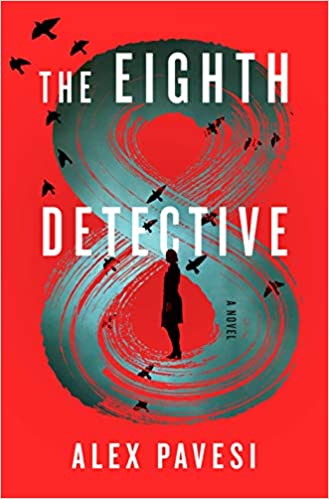 The Eighth Detective by Alex Pavesi
The Eighth Detective by Alex Pavesi Format: eARC
Source: supplied by publisher via Edelweiss
Formats available: hardcover, paperback, ebook, audiobook
Genres: mystery, suspense, thriller
Pages: 289
Published by Henry Holt on August 4, 2020
Purchasing Info: Author's Website, Publisher's Website, Amazon, Barnes & Noble, Kobo, Bookshop.org
Goodreads
There are rules for murder mysteries. There must be a victim. A suspect. A detective. The rest is just shuffling the sequence. Expanding the permutations. Grant McAllister, a professor of mathematics, once sat down and worked them all out – calculating the different orders and possibilities of a mystery into seven perfect detective stories he quietly published. But that was thirty years ago. Now Grant lives in seclusion on a remote Mediterranean island, counting the rest of his days.
Until Julia Hart, a sharp, ambitious editor knocks on his door. Julia wishes to republish his book, and together they must revisit those old stories: an author hiding from his past, and an editor, keen to understand it.
But there are things in the stories that don’t add up. Inconsistencies left by Grant that a sharp-eyed editor begins to suspect are more than mistakes. They may be clues, and Julia finds herself with a mystery of her own to solve.
My Review:
This book is like one of those nesting dolls. It begins as a story within a story. Then it morphs into a bunch of stories within a story, only for that assumption to shift again into those stories, within a story, within two entirely different stories.
And they are all about detective stories. About classic mysteries. Until they’re not. And then, they are again.
The framing story, well, the initial framing story, involves the editor from a small, independent press that specializes in crime and mystery books, visiting the reclusive author of a single, privately published book of mystery stories that was released in VERY limited numbers over 30 years ago and it now nearly forgotten and completely out of print.
That editor comes to the author’s remote island hideaway to read through all those old stories and discuss the possibility of bringing the collection back into print. The stories, all wrapped around a mathematical exploration of the mystery genre, represent different takes on classic, so-called Golden Age, mysteries.
And the stories themselves are interesting enough. They’re all just a bit creepy, just slightly off-putting in one way or another. They all end with a kind of sick twist, where the character that the reader empathized with throughout the story turns out to be the villain after all.
Sometimes a sick villain, at that.
So all the stories from the collection are disturbing. But absorbing. And all illustrate the author’s original premise about the requirements for a book to be a mystery being mathematically quantifiable.
But as the editor probes the writer, the reader gets the sensation that there is more going on here than meets the eye. And then that there is even more going on here than that.
The mystery is wrapped, not in the proverbial enigma, but in yet another mystery. It’s only after the big reveal that we discover that there really was an enigma hiding underneath all along.
Escape Rating B: Once upon a time, a library I used to work at required that, in order for a book to be classed as a mystery, it had to have a body and a detective. In other words, someone had to be dead and someone had to be trying to figure out who made them that way. The mathematical foundation of the original book reads as an extension of that principle as well as a set of mystery stories in the classic mode.
There must be a victim. There must be a killer. There must be suspects. And there must be a detective. There may be more than one of any or all of the above. An individual may occupy more than one, or even all, of those possible slots.
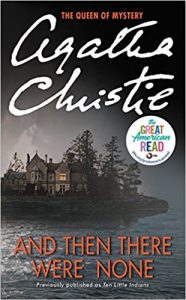 And that’s the formula for the stories. Single victim, multiple victims. Single killer, multiple killers. The detective may be a suspect and may even be the killer. The detective may be the victim. The stories will remind the reader of some of the classic mystery stories, with homages in particular to Murder on the Orient Express, And Then There Were None and surprisingly, the movie The Sixth Sense. I’m sure there were others that I didn’t catch.
And that’s the formula for the stories. Single victim, multiple victims. Single killer, multiple killers. The detective may be a suspect and may even be the killer. The detective may be the victim. The stories will remind the reader of some of the classic mystery stories, with homages in particular to Murder on the Orient Express, And Then There Were None and surprisingly, the movie The Sixth Sense. I’m sure there were others that I didn’t catch.
The individual stories were good to excellent, but they all had that touch of something being awry that generally came as a surprise to this reader. But the stories, while they occupy the bulk of the book, turn out not to be the main point of the whole thing.
And that’s where it just missed being something special. Your mileage, of course, may vary. But compared to just how good most of the individual stories were, the endings veered into melodrama rather than mystery, and felt just a bit flat. A little too much of the old deus ex machina there at the end.
So the framing story – and then the frame wrapped around the framing story – didn’t quite gel for me, but came oh-so-close. The individual stories, however, were great little homages to classic mystery fiction that were a lot of fun to read with just a shiver of creeping evil at the end of each.

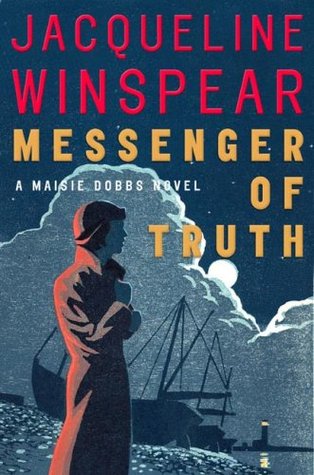 Messenger of Truth (Maisie Dobbs, #4) by
Messenger of Truth (Maisie Dobbs, #4) by 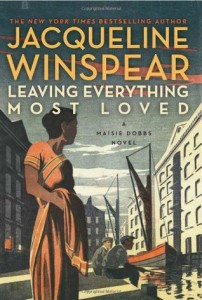 I always look forward to this tour, so I decided to do my own “Month of Maisie” this year. Hence today’s review of Messenger of Truth. Eventually I’ll catch up to myself, as I started reading with
I always look forward to this tour, so I decided to do my own “Month of Maisie” this year. Hence today’s review of Messenger of Truth. Eventually I’ll catch up to myself, as I started reading with 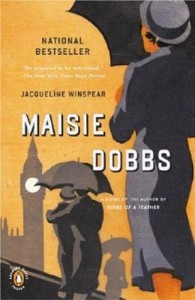 Escape Rating B+: This series as a whole are excellent historical mysteries. If you like the genre and haven’t read them yet, start with the first book,
Escape Rating B+: This series as a whole are excellent historical mysteries. If you like the genre and haven’t read them yet, start with the first book, 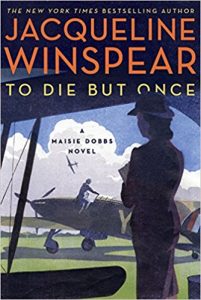 Maisie herself is always a fascinating character. Her life has made her the ultimate outsider, not part of any of the social classes, but able to operate in all of them. At the same time, this is a case where Maisie herself is working through multiple crossroads, deciding whether she wants a traditional life after all, or to continue down the independent road she has chosen. And just how much of her war it is time to put behind her – even as the next war looms on the horizon.
Maisie herself is always a fascinating character. Her life has made her the ultimate outsider, not part of any of the social classes, but able to operate in all of them. At the same time, this is a case where Maisie herself is working through multiple crossroads, deciding whether she wants a traditional life after all, or to continue down the independent road she has chosen. And just how much of her war it is time to put behind her – even as the next war looms on the horizon.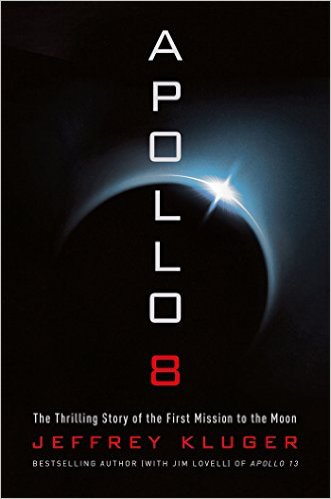 Apollo 8 by
Apollo 8 by 